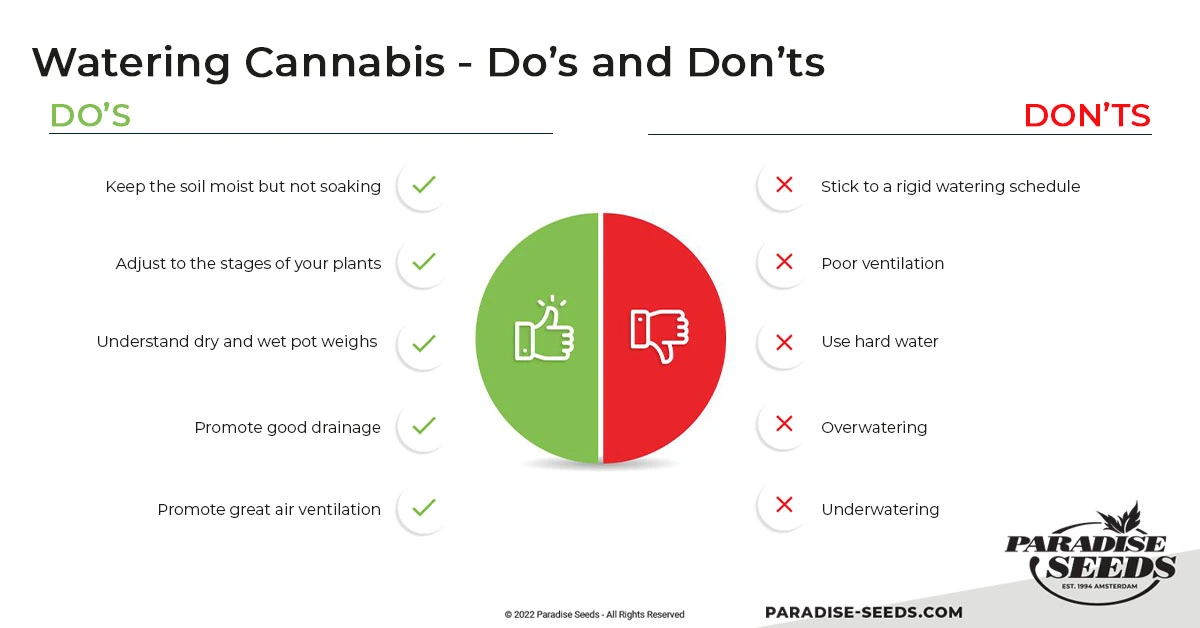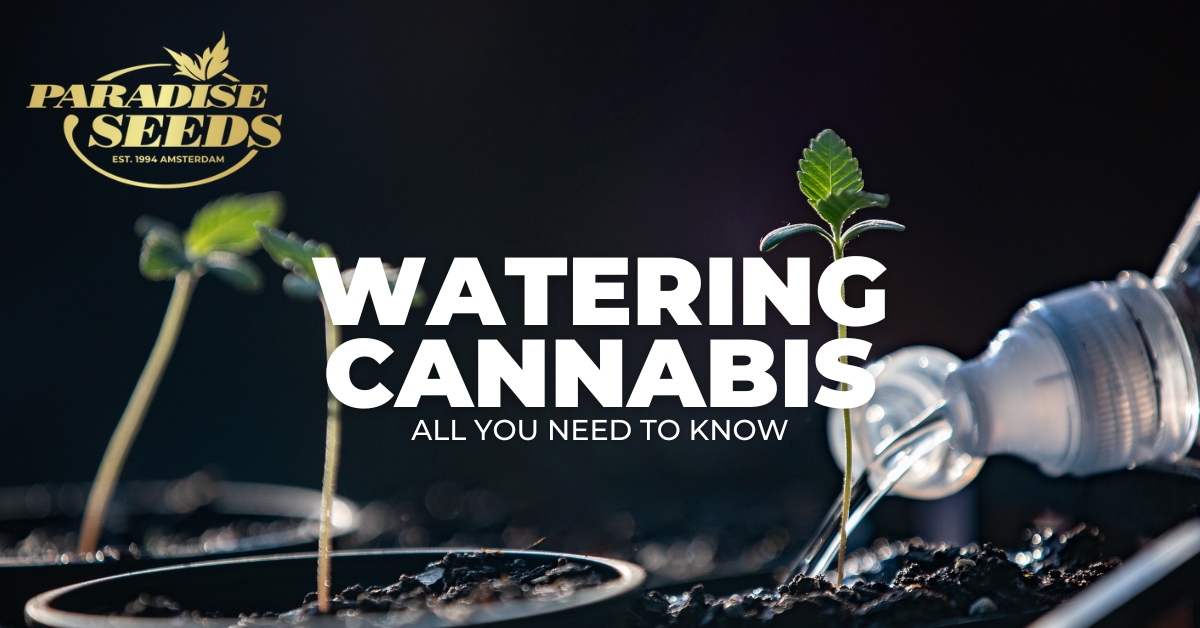Proper irrigation plays a crucial role in cannabis cultivation. Watering cannabis, wether during the vegetative or flowering stage, should be based on the plant’s specific needs. This is essential as it aids in delivering nutrients to different parts of the plant and supports critical processes like photosynthesis and flower development.
How can you ensure you’re not overwatering your plants while providing sufficient water? Does the type of water used for irrigation matter? Is it beneficial to consider using an irrigation system? In this article, we will address all of these questions!
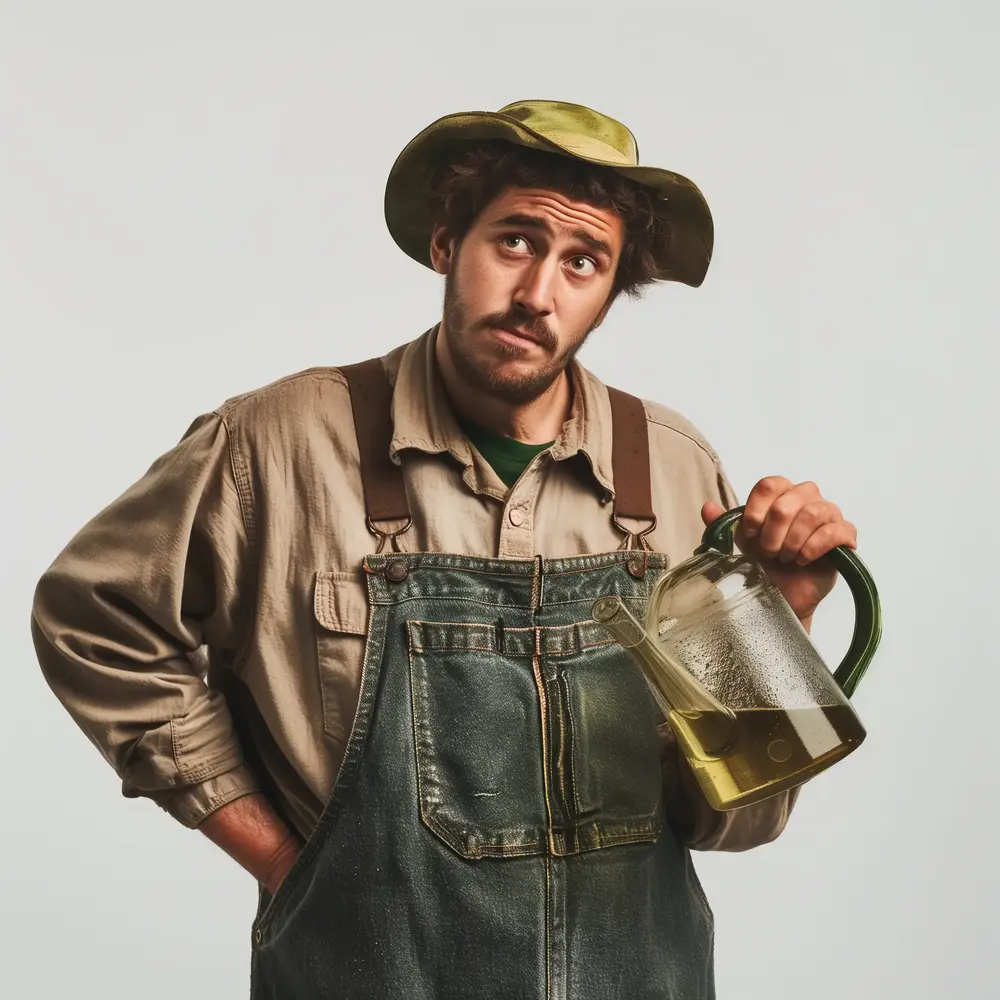
How much water do cannabis plants need?
When setting up your growing kit, it’s important to remember the significance of water. Even though it may not be listed as a separate item to purchase, underestimating its importance can be a big mistake. Regardless of how professional your growing system is, incorrect cannabis watering can lead to fundamental mismanagement.
Although average daily water use varies from one growing area to another and is highly dependent on geography, soil properties, weather, and cultivation type, it is generally accepted that cannabis is a water-intensive crop.
According to a study on the environmental impact of cannabis cultivation published in the Journal of Cannabis Research, outdoor cannabis has twice the water requirements of corn, wheat, grapes, and soybeans, consuming about 23 liters of water daily from June to October. In contrast, indoor cannabis production requires an average of about 10 liters of water per day towards the end of the growing season, so it is essential to irrigate accordingly.
Remember that these are just general guidelines that may need to be adjusted based on the specific conditions of your growing medium. So, avoid cannabis watering a set amount each time without checking to ensure it’s appropriate. Continually assess the soil moisture and be willing to adjust your watering schedule accordingly.
Factors to consider when watering cannabis
The first and most important consideration is whether you grow your crops outdoors or indoors. The general rule of thumb is that you may need to double your water requirements when growing crops outdoors, but the exact amount will depend on various factors.
Climate and temperature
When growing cannabis indoors, you have control over the environment, whereas outdoors, you need to adapt to the climate. In warmer regions, outdoor cannabis plants will grow faster and require more water. The amount of cannabis watering needed depends on the climate and how much rain the plants receive. You must be cautious when watering cannabis in warm, humid climates because plants can absorb water through their leaves and roots. Over-watering in such conditions can lead to the growth of fungi and mold.
Proper soil drainage is essential in colder regions to prevent issues like root rot caused by standing water. A moisture meter can be beneficial for accurately gauging soil moisture levels.
Watering cannabis plants grown in soil vs. pots
If the climate in your area can surprise you with a sudden drop in temperature, or if the soil quality is not optimal, you can choose to grow plants in pots outdoors.
While planting in the ground allows the roots to spread out more, leading to larger plants and higher yields, it may also expose them to more extreme weather conditions.
The advantage of growing in pots is that you can bring the plants indoors during cold nights and have more control over watering, allowing you to meet your plants’ needs better.
How much water should you give your cannabis plants?
When watering cannabis plants, remember that the soil should be moist but not waterlogged. The amount of water needed will vary depending on the stage of growth. Cannabis plants generally need increasing amounts of water as they develop, so you should gradually increase the frequency and amount of water until the final weeks of flowering when they will require less water again.
Watering during the seed germination stage.
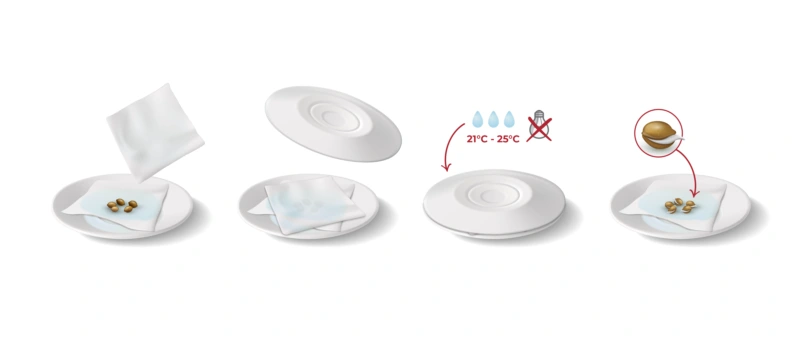
When you first plant the seed, a small amount of water will be enough to moisten the soil. At this point, you won’t need a watering can; it’s better to provide moisture with a gentle spray. Watering should be done 1-2 times a week, but no more than every four days.
Watering during the seedling stage
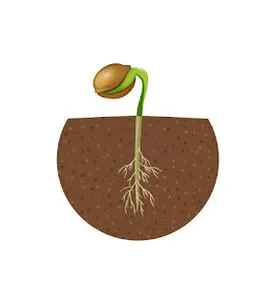
You can still use the spray during the seedling stage when root development has started. Over watering cannabis plants during this stage is easy, so be cautious not to soak the growing medium. The best approach is to water more often but in moderate amounts. Giving too much water to seedlings can lead to irreversible damage, such as root rot and fungal or bacterial infections. The recommended watering frequency is 1-2 times a week, with a maximum every 3 days.
Watering during the vegetative stage.
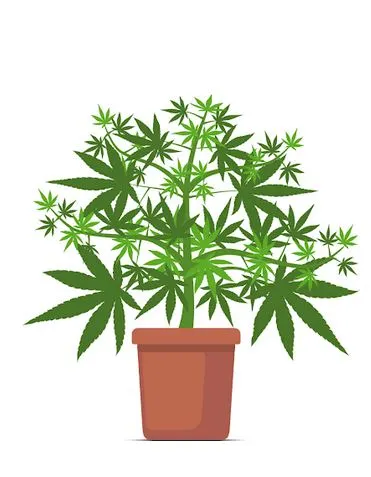
When entering the vegetative stage, it’s important to water more frequently. Plants need sufficient water for nutrient uptake, which is essential for developing strong stems and leaves. Depending on temperature and other growing conditions, you can water 2-3 times a week, but no more than every two days.
Watering during the flowering stage
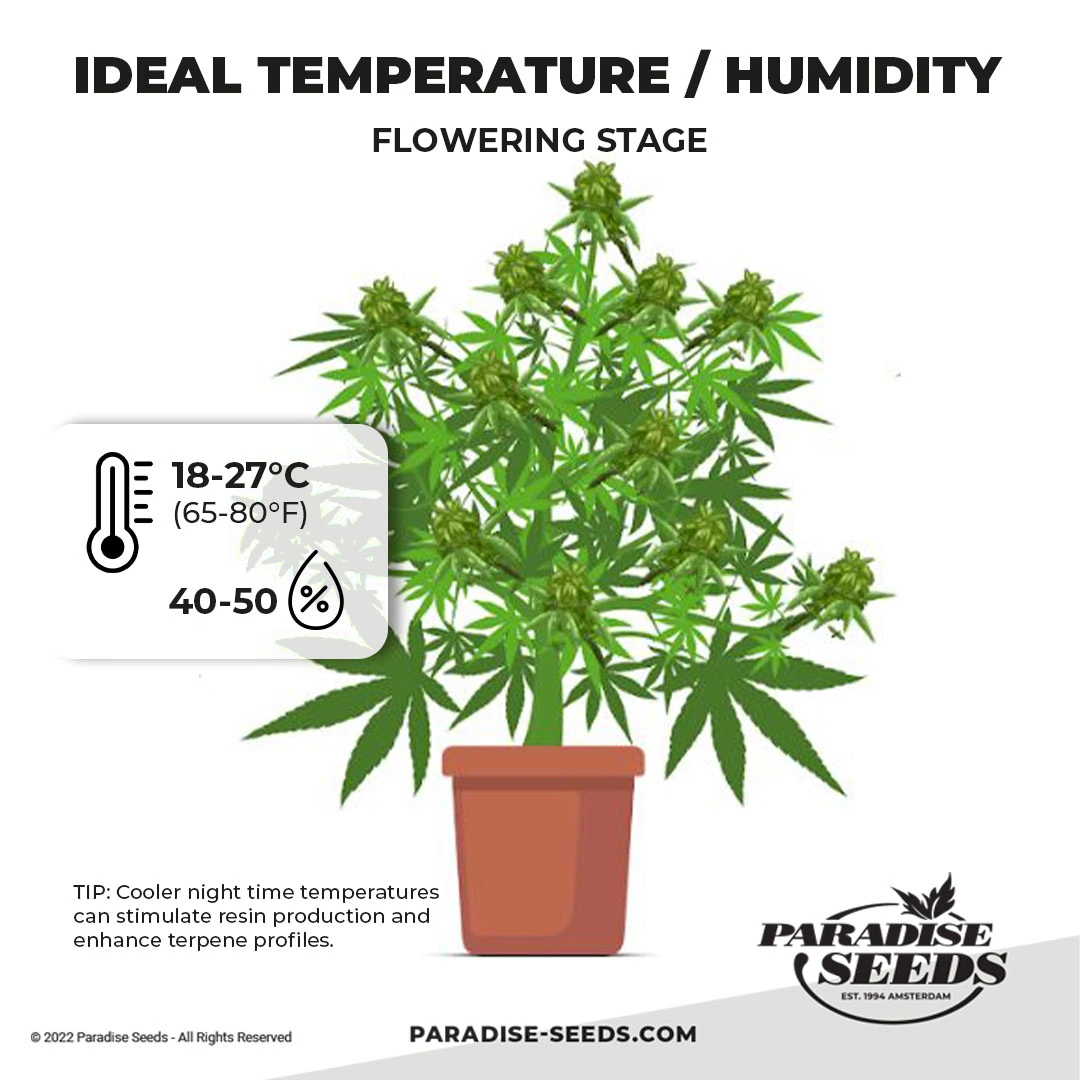
During the flowering stage, you will need to do more watering cannabis to aid the development of the buds. It’s important to note that plants absorb water rapidly during this period, so be cautious not to overwater them. Overwatering can have the same detrimental impact on yields as underwatering. On average, watering every 2-3 days is recommended during this stage, but daily watering may be necessary in hot outdoor weather.
Signs that it’s time to water again
While a watering cannabis schedule is essential and valuable, it is not a substitute for checking the moisture in the soil. You need to check the moisture in the soil regularly because plants, even indoors, may not use water at the exact rate you expect. This means you must ensure it’s time to water each time. You can do this using different techniques like finger or moisture meters.
- Use your finger
Pushing your finger 4-5 cm into the soil is a simple but great way to measure moisture. Do you feel dry in the soil? Then it’s time to water!
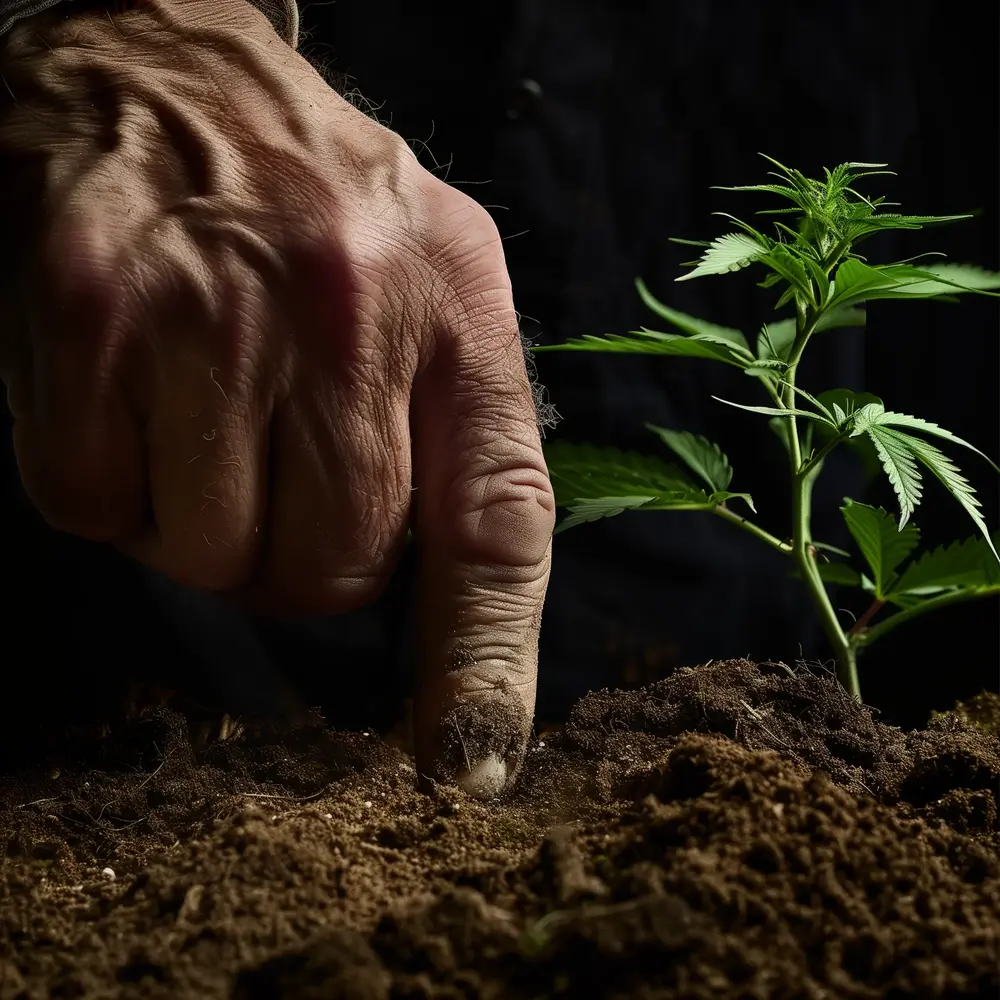
- Check the leaves
When the tips of the leaves turn yellow and start to curl, it could mean that the plant needs more water, especially if the leaves are also drooping. It’s important to check the soil for moisture because yellow leaf tips may signal a lack of nutrients that watering can’t fix.
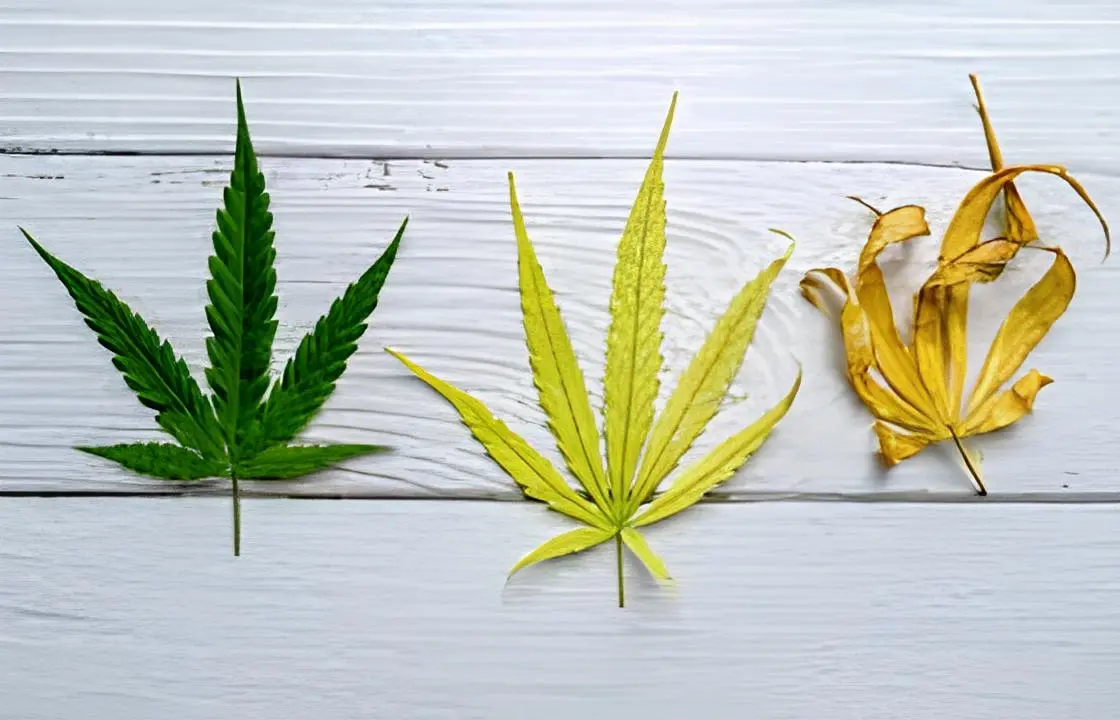
- Measure the weight of the pot
This method is more time-consuming than using your finger, but it allows you to gauge the moisture level accurately. First, weigh the pot before and immediately after watering your cannabis plants. This will show how much the plant weighs when it needs water again. Remember that the plant’s weight will increase slightly due to growth, even between two waterings.
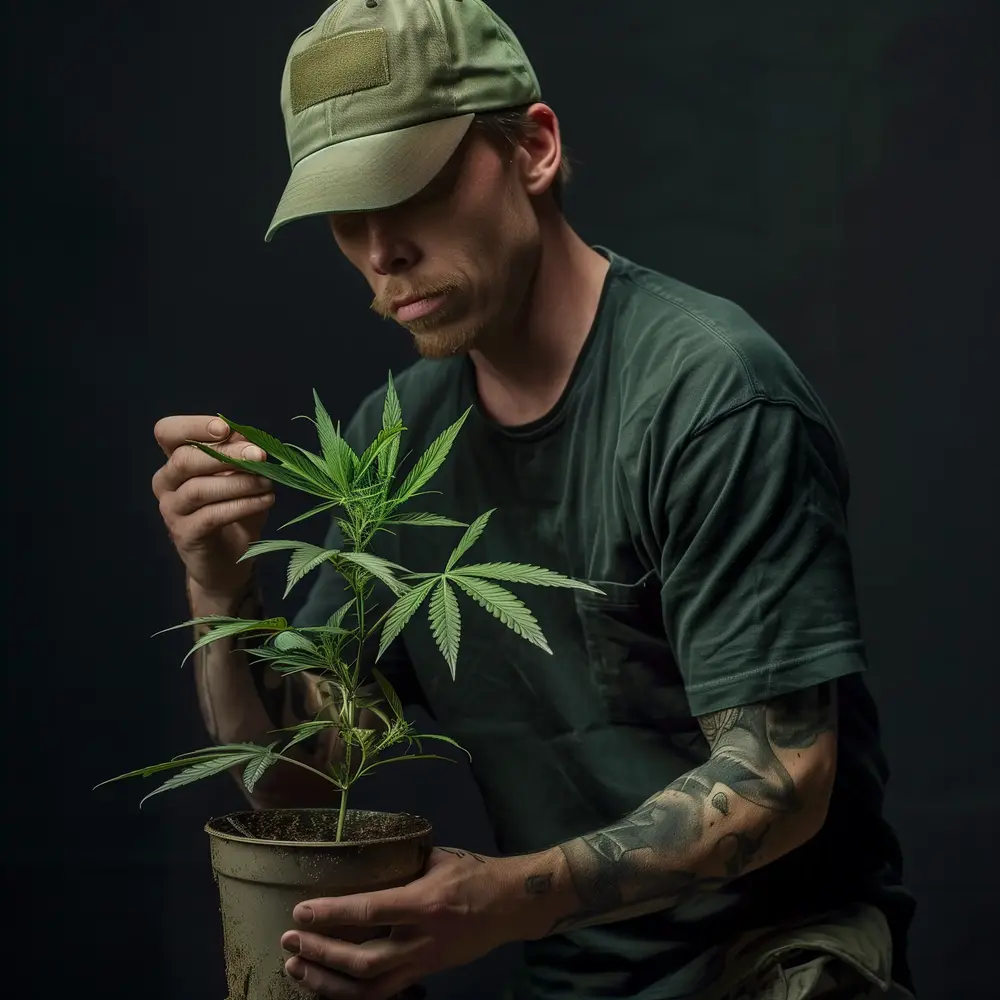
- Use soil moisture meters
Soil moisture meter tools can help ensure that the soil is adequately moist. They always allow you to understand soil moisture levels accurately and schedule your next watering at the right time.
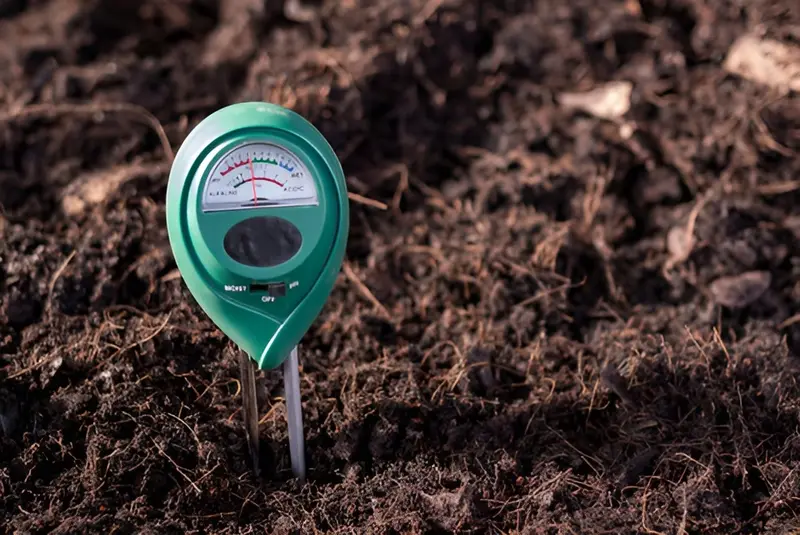
When is the best time of day to water your plants?
Like most plants, watering cannabis should occur in the early morning before sunrise or in the evening after sunset. The roots retain water better in cooler temperatures; watering during the day can lead to faster evaporation. Moreover, water droplets on leaves during the day can act like magnifying glasses, potentially damaging the plant’s tissues.
What type of water should be used for irrigation?
Avoid hard water
The quality of tap water available to you is influenced by the climate where you live and the condition of the plumbing network. While some tap water is suitable for irrigation, you may want to explore alternative options in other locations. The best way to ensure the water’s hardness is to perform a professional test.
It’s generally best to avoid using hard water for your watering cannabis schedule. Hard water tends to contain higher levels of minerals like calcium and magnesium. While these minerals can be beneficial for cannabis plants, too much of them can throw off the nutrient balance. On the other hand, using soft water, filtered water, or reverse osmosis water allows you to control and adjust nutrient levels according to your plants’ current needs.
Water temperature
It’s easy to assume that the tap water temperature we use is suitable for cannabis plants, but it’s not that simple. The ideal water temperature for cannabis is around 20°C, which is warmer than what we find refreshing.
Water temperatures below 10-15°C can shock the roots and hinder the uptake of certain nutrients, like phosphorus. If your plant’s leaves turn purple (and it’s not a naturally dark-leaved cannabis), it may be a sign that you’re watering with too cold water. This can result in a plant’s poorer overall condition and lower yields.
Watering cannabis with too hot water is usually due to carelessness rather than a conscious decision. Water stored in a bottle and warmed by the sun can reach temperatures exceeding 30°C. Warmer water contains less oxygen, potentially leading to reduced nutrient uptake and, in severe cases, root rot.
Watering cannabis plants in different stages of growth
We have already discussed the timing of watering based on the time of day, frequency, and properties of the water used. Let’s examine the different watering methods to keep your plants healthy.
- Spraying
It’s important to be cautious when watering during the germination phase or at the beginning of the seedling stage. Spraying or foliar fertilization is practical at this phase, where water is applied as a fine spray on the leaves to aid nutrient uptake. This technique can also be used as a supplement in the later stages of development, but it’s crucial to avoid doing it during sunny hours, just like with watering.
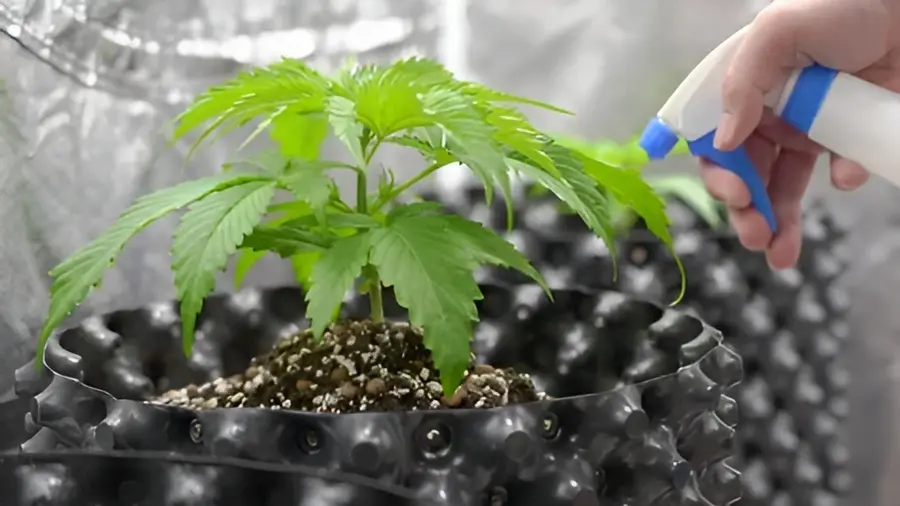
- Hand watering
The most common and traditional method for watering cannabis seedlings and larger plants in small plantations is to use a watering can or hose to apply water to the base of the cannabis plants, ensuring even moisture distribution. This method allows precise control of the amount of water and adjustment to the plants’ current needs. By manually watering your plants, you are in contact with all your plants, so you can regularly check their health and quickly detect any disease or pest attacks.
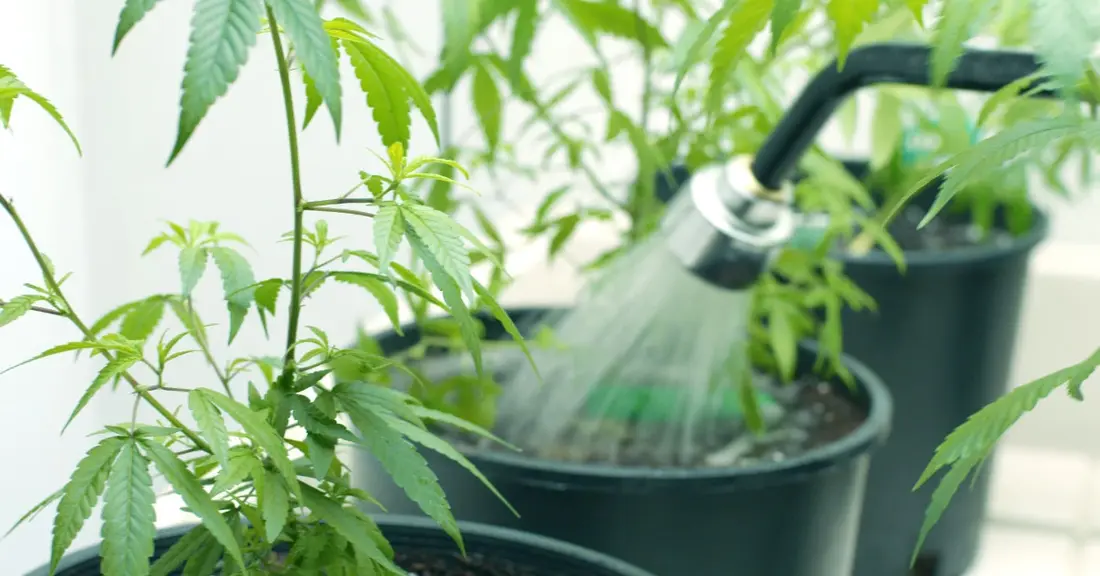
- Watering from below
This method allows you to deliver water directly to the roots, which promotes vigorous root development. For best results, place a deep container under the pot that is wider than the pot and at least 20% of its height. Allow the plants to sit in the water for 10 to 15 minutes to absorb the water gradually. If the soil in the pot starts to dry out, it’s a sign that the plant needs to be watered again.
The drainage holes in the pot allow water to enter the soil without causing it to become waterlogged. This bottom-up watering method allows the plant to use water gradually, reducing the risk of overwatering and fungal growth.
Keeping the top of the leaves and soil from contacting the water further reduces the risk of issues. However, it’s also important to occasionally water your plants from above to prevent the soil from completely drying out and becoming too hard.
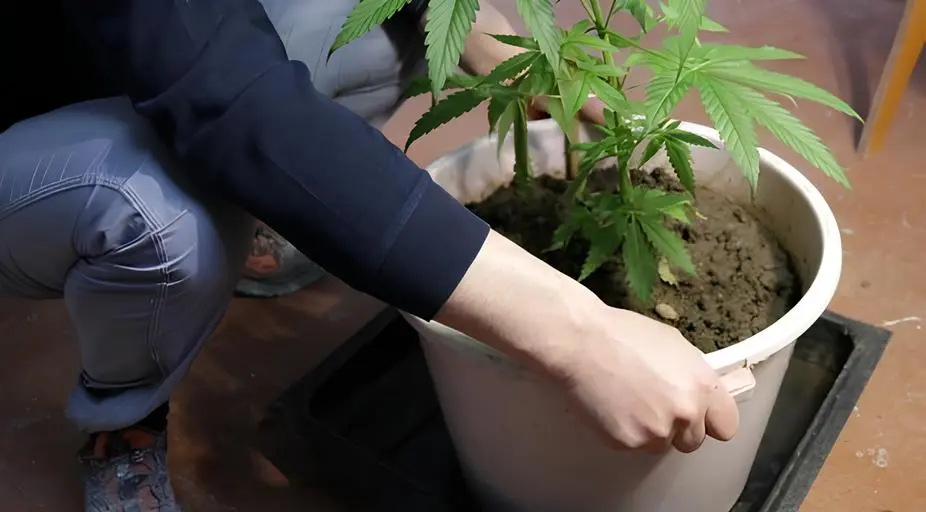
Using irrigation systems
If you have a large plantation, traditional watering cannabis methods can be time-consuming and may lead to inaccuracies, such as over or under-watering. In these cases, irrigation systems are worth considering to provide uniform and consistent hydration throughout the plantation.
- Drip Irrigation
Drip irrigation is a system of pipes that delivers water to the base of cannabis plants. The automated drips ensure that your plants get the right amount of water and nutrients gradually. While the system requires an initial investment, it offers numerous benefits that ultimately pay for themselves.
The main benefit of a drip irrigation system is its ability to deliver water directly to the root zone, minimizing water waste from evaporation and runoff. Drip systems also ensure the even distribution of nutrients to plants during irrigation.
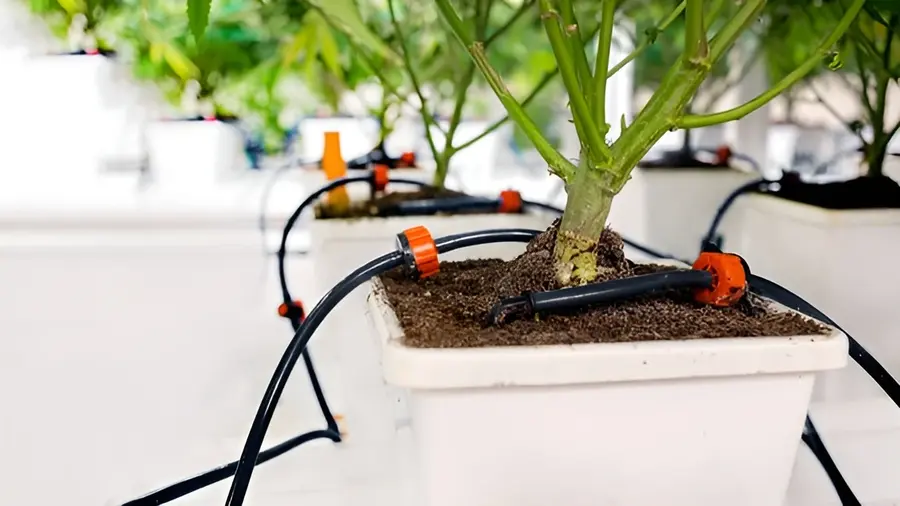
Using drip irrigation systems to water cannabis provides better control over the quantity and quality of water your plants receive while also conserving a significant amount of water. By overseeing the entire irrigation process, you can prevent both under and overwatering.
When using drip systems, it’s vital to maintain the pipes and water pump to prevent blockages caused by waste and sediment.
- Flood and Drain System (aka. Ebb and Flow)
As the name implies, these systems perform a dual function of flooding and draining the growing medium with water and nutrients through the trays and flood tables.
The automated system makes the watering cannabis irrigation process more convenient, increases nutrient uptake of cannabis plants, and supports healthy growth. In Ebb and Flow systems, excess nutrient solution can be collected for reuse, reducing waste and optimizing resource consumption.
Another advantage of Flood and Drain systems is their versatility. They can be used with various growing media, providing optimum irrigation for rockwool, coir, clay pebbles, and hydroponic systems. However, compared to drip irrigation systems, flood and drain systems require more water due to flooding and offer more limited water volume control.
Similarly to drip irrigation systems, regular cleaning is essential for flood and drain systems to avoid blockages.
Final thoughts
Having a proper watering cannabis strategy is essential for successful cannabis cultivation. This summary aims to provide insight into important considerations for watering and the main irrigation methods. Just like lighting, soil, and nutrients, it’s crucial to consider the specific characteristics of your cultivation process before deciding on the best irrigation method for your needs.
Here’s a list of the basic watering dos and don’ts. You can also find out more from this article on the watering cannabis topic.
